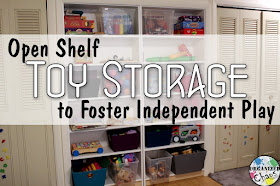I wrote last year about the classroom jobs that I implemented in my elementary general music classes (you can read more details on what jobs I used, how I implement them with hundreds of students to teach between kindergarten and 6th grade, and why I use them,
here in my last post). Today I want to introduce you to the new job I added this year: Peace Keepers. So far the students and I are enjoying the change, and I think other classrooms would benefit from having this job in their classes as well.
First of all, let me review very quickly what my jobs were and how I implement them in my classroom. When I started using classroom jobs last school year, I had 6 jobs: Clean Up, Line Leader, Supplies (passing things out), Teacher Helper, Compliment, and Attendance. I assigned each of the jobs to a group of students rather than individuals, using the color "teams" I already have set up in my classroom based on their seat (read about that
in this post). This way I don't have to keep track of hundreds of students, but everyone can still have a turn on each job- I rotate the jobs every few weeks so each team ends up having one turn on each job by the end of the year. The jobs are general enough either for the whole team to do the job together (cleaning up and passing out supplies) or to take turns (line leader, teacher helper).
Out of all the jobs I used last year, my favorite by far was the job of Compliment. At the end of class, one student from the assigned team is responsible for complimenting someone not on their team on anything they want- their work in music class, their value as a friend, or even their new shoes. This has been a great practice for students and, although they were hesitant and awkward at first, they love it just as much as I do now!
I decided that this year I wanted to add more responsibility for caring for each other- more opportunities for the students to practice social skills and take part in building a positive learning community- into the classroom jobs. After thinking about it over the summer, the result was my decision to add the job of Peace Keepers. Although it was actually going OK, I got rid of the Attendance job to make room for the new one- now I just let whichever student knows where missing students are tell me, just like I did for the first decade of my teaching!

I explained the job of Peace Keeper to my students as a way for them to assist in helping students who are upset. In particular, I wanted them to be the "first line of defence" when one or two students get upset with no obvious cause. I made it very clear that they were NOT going to be mediating every misbehavior and argument (we simply don't have that kind of time), or becoming everyone's confidant. However, if a student asked to sit out of class, or was visibly upset, and I couldn't immediately talk to them to find out what was wrong, I wanted the students to be able to go and ask them if they are OK and see if there is anything that they can do for them.
So far this has worked out very well. Only a few classes have actually made use of the job- the rest haven't really needed it (which is a good thing)- but the ones that have, used it well. I still need to do a better job reminding myself to utilize those students to go and check in on students when I'm in the middle of a class activity, but when we have used the job it has been very helpful for the student who is upset, for me, and for the ones doing the helping.
I'm happy to have another way for me to encourage students to contribute to a positive learning community and develop these important social skills. It can be hard, when we get such little time with our students, to find ways to spend time on the real work of relationship-building, but these classroom jobs have been an easy way to do that without taking away from class time! If you want to read more about my thoughts on, and strategies for, behavior management, go
check out this post on the topic.
Have you used classroom jobs in your music room? How did you do it? What do you do to encourage students to invest in a positive learning community? Leave your thoughts below!
Want more?
Subscribe right here to the Organized Chaos newsletter and get ideas and resources sent straight to your inbox!
If you are considering implementing classroom jobs in your music room, make sure to check out my original post on the topic here:







































